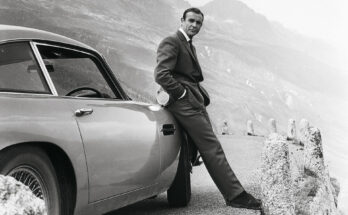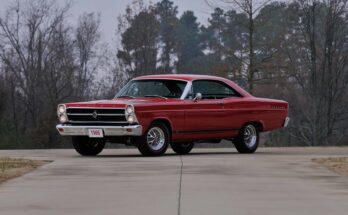In 1977, the Lincoln Continental Town Coupé rolled onto the scene like a land yacht docking in a sea of compacts, a defiant middle finger to the era’s looming fuel efficiency mandates. At 233 inches long—nearly 20 feet—this two-door behemoth was a rolling testament to American excess, the last of its kind before the industry’s inevitable downsizing. Its story is one of unapologetic luxury, quirky design, and a cultural moment when bigger was still better.

Picture this: it’s 1977, and the automotive world is in flux. The oil crisis of 1973-74 lingers in memory, and Cadillac, Lincoln’s arch-rival, has already caved to pressure, shrinking its DeVilles and Fleetwoods for the ’77 model year. But Lincoln? They doubled down. The Continental Town Coupé, alongside its four-door sibling, the Town Car, stood as Ford’s final bastion of “uncompromised size,” proudly stretching across a 127.2-inch wheelbase with a curb weight nudging 4,836 pounds. It was the largest two-door coupe Ford ever produced, a title it shared with the Continental Mark V, though the Town Coupé was less flashy, more stately.
The car’s design screamed confidence. Sharp, square lines defined its body, with a Rolls-Royce-inspired vertical grille introduced in ’77 to give it a regal sneer. Hideaway headlights, opera windows with a gold Continental star, and chrome accents galore made it look like a mobile penthouse. Inside, it was a cocoon of decadence: “floating pillow” seats in Media velour or optional leather, power everything (including vent windows!), and a Cartier-signed digital clock that was more status symbol than timekeeper. The dashboard, still carrying a whiff of aviation-inspired design, featured gauges that were as much about theater as function.
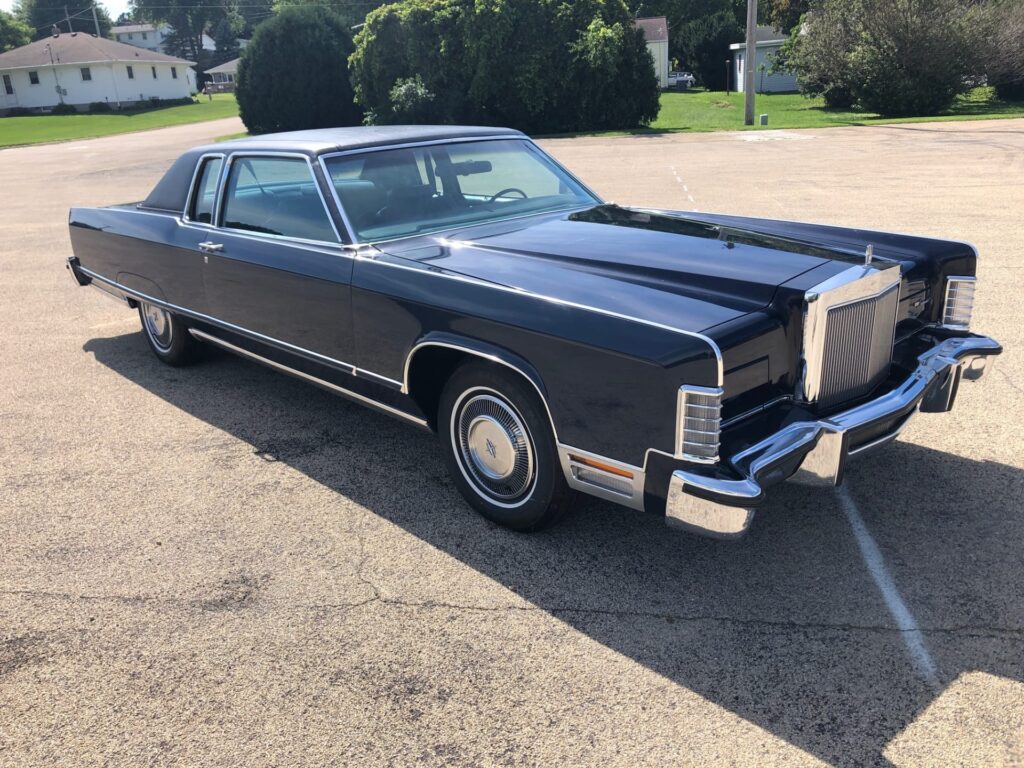
Under the hood, the standard engine was a 400-cubic-inch V8 pumping out a modest 179 horsepower—hardly a muscle car, but with 315 lb-ft of torque, it was torquey enough to waft this 2.5-ton cruiser down the highway with eerie silence. For those outside California, a 460-cubic-inch V8 with 208 horsepower was optional, a final hurrah for the big-block era before it vanished in ’79. Fuel economy? A dismal 11-13 mpg, but buyers didn’t care. This car wasn’t about efficiency; it was about presence.
The Town Coupé’s story gets interesting when you consider its context. In 1977, Lincoln sold 95,000 Continentals, with 68,000 being sedans and the rest coupes. The Mark V, its glitzier sibling, outsold the Town Coupé four-to-one, hinting that buyers preferred the Mark’s personal-luxury swagger over the Coupé’s understated elegance. Yet, the Town Coupé had its fans—those who wanted a two-door that wasn’t as ostentatious as the Mark but still dwarfed everything else on the road. It was a car for people who saw downsizing as a betrayal of the American dream.One quirky anecdote comes from Tokyo, of all places. A ’77 Town Coupé was spotted cruising Ginza’s broad streets, a two-ton slab of American bravado in a city of narrow lanes. Fitted with tacked-on turn signals and odd mirrors for the Japanese market, it looked as out of place as a sumo wrestler in a sushi bar. Yet, its sheer audacity made it a head-turner, a symbol of global elites who craved the Continental’s unmatched comfort, even if parking it was a logistical nightmare.
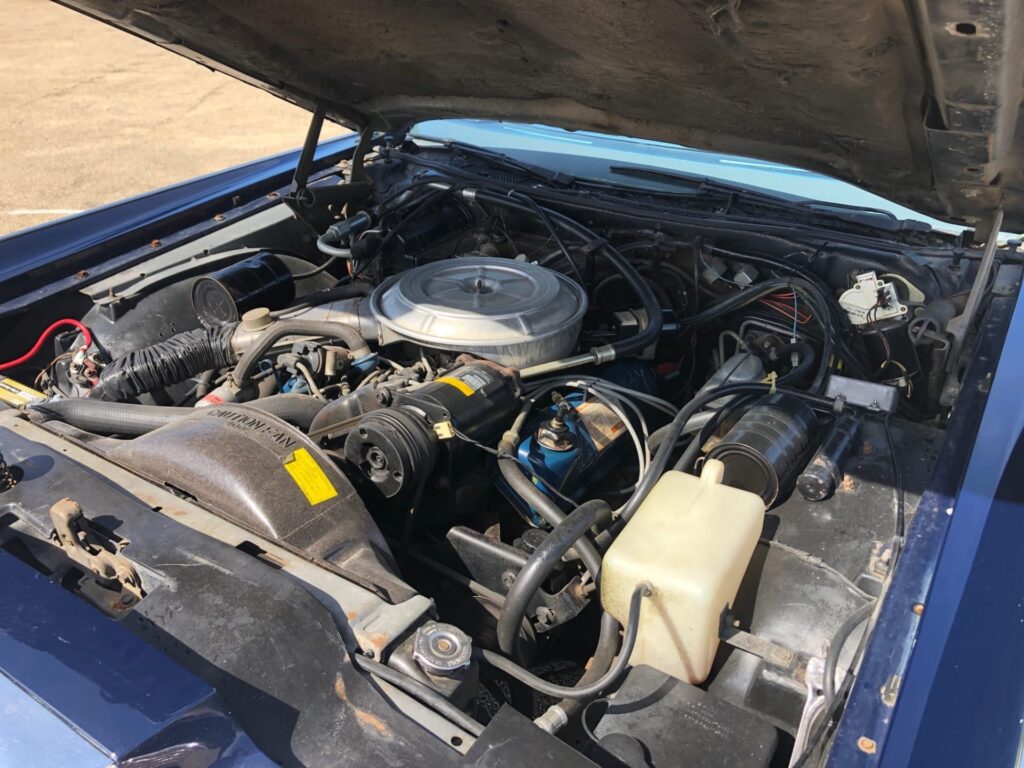
Then there’s the pop culture connection. In the Netflix comedy Schitt’s Creek, Johnny Rose buys a ’77 Continental Town Car in Season 3, a black-on-black beast that perfectly embodies the family’s faded opulence. Its hulking presence and insatiable gas thirst made it a comedic foil, a relic of a bygone era driven by a man clinging to his past. The show’s choice was no accident—this car was the ’70s, for better or worse.But the real story lies in the owners. Take the guy in Gravenhurst, Ontario, who snagged a ’77 Town Coupé with the 460 V8 from a defunct Ford dealership in 2012. The car, a survivor with a solid underbody but a sun-faded vinyl roof, had been tucked away for years, its history tied to a dealer who’d run the business for four decades. Or the kid who drove his dad’s ’77 Town Car to prom in ’78, feeling like a king behind the wheel of a white-on-cordovan cruiser.
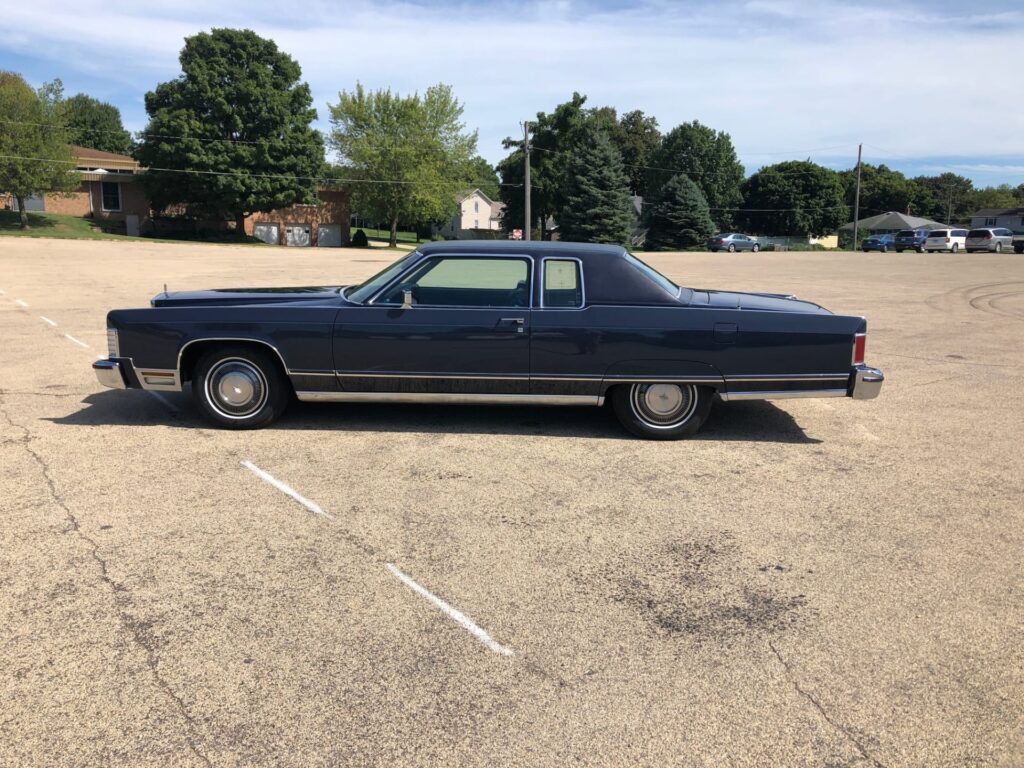
These cars weren’t just vehicles; they were memory machines, evoking a time when luxury meant space, silence, and a refusal to compromise.By 1979, the party was over. The 460 V8 was gone, the 400 became standard, and Lincoln faced the inevitable: CAFE (Corporate Average Fuel Economy) regulations forced a downsizing for 1980. The Town Coupé vanished, replaced by a sleeker but less imposing Panther-platform model. The ’77-’79 Continentals were the last of the true giants, a final love letter to an America that thought it could outrun reality. Today, they’re cherished by collectors who polish their chrome and wax their Jubilee Gold Metallic paint, keeping the dream alive at car shows and cruise nights.The 1977 Lincoln Continental Town Coupé wasn’t just a car; it was a statement. At 233 inches, it demanded space, attention, and a certain kind of driver—one who didn’t care about gas prices or parking spots, only the feeling of gliding above the road in a leather-lined fortress. Its story is one of defiance, nostalgia, and a fleeting moment when Detroit still built palaces on wheels.

